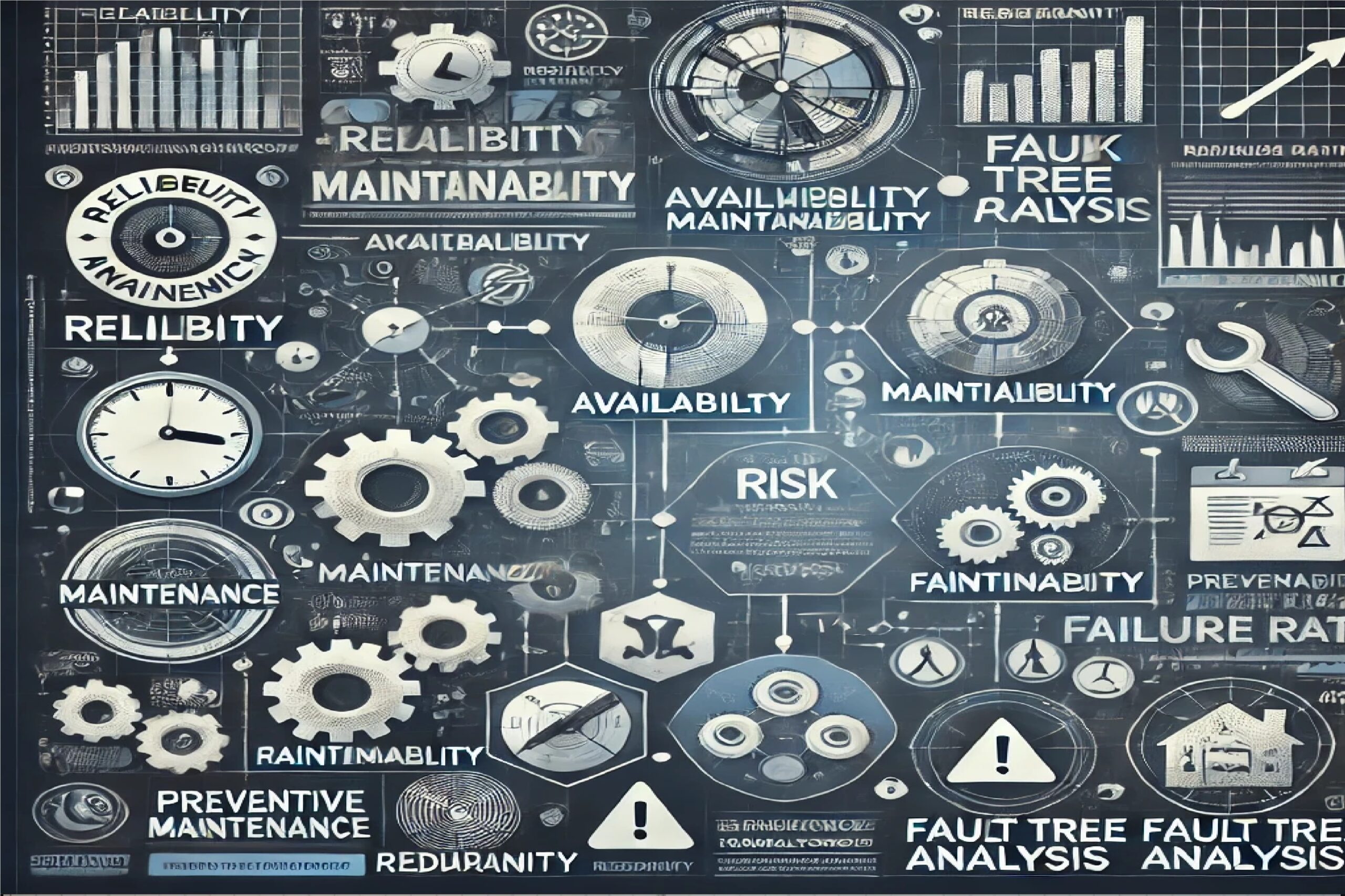Functional safety is a critical domain in the management and design of complex systems. It aims to ensure the reliability, availability, maintainability, and safety (RAMS) of industrial equipment and systems. The ultimate goal is to minimize risks associated with system operations by ensuring continuous service and preventing failures that may cause accidents, financial losses, or environmental damage.
To evaluate and enhance the reliability of systems, it is essential to rely on accurate indicators and risk mitigation strategies. This article explores these concepts, highlighting key indicators and effective risk mitigation techniques in the field.
1. Key Indicators of Reliability Engineering
Indicators are measurement tools that evaluate the performance of a system in terms of its reliability. They provide quantifiable information to analyze and optimize processes and systems. The primary indicators used in Functional safety include:
1.1 Reliability
Reliability measures the probability that a system or component will function without failure over a specific period and under defined conditions. It is often expressed as a failure rate or MTBF (Mean Time Between Failures). A high MTBF indicates good reliability, meaning the system can operate without incidents for an extended period.
MTBF Calculation:MTBF=Total operating timeNumber of failuresMTBF = \frac{\text{Total operating time}}{\text{Number of failures}}MTBF=Number of failuresTotal operating time
1.2 Availability
Availability refers to the ability of a system to be operational and ready for use when required. It depends not only on reliability but also on maintainability. It is typically expressed as a percentage and calculated using MTBF and MTTR (Mean Time To Repair).
Availability Calculation:Availability=MTBFMTBF+MTTRAvailability = \frac{MTBF}{MTBF + MTTR}Availability=MTBF+MTTRMTBF
A high availability (close to 100%) is the target in many critical sectors such as aerospace, energy production, and transportation systems.
1.3 Maintainability
Maintainability assesses the ease with which a system can be repaired or restored to operational status after a failure. It is typically evaluated using the MTTR, representing the average time needed to repair the system after a fault.
Maintainability Indicator:MTTR=Total repair timeNumber of repairsMTTR = \frac{\text{Total repair time}}{\text{Number of repairs}}MTTR=Number of repairsTotal repair time
1.4 Failure Rate
The failure rate quantifies the frequency of faults in a given system. It is often expressed as failures per unit of time (e.g., failures per hour). A low failure rate indicates that the system operates in a stable and reliable manner.
2. Risk Mitigation Techniques
Risk mitigation refers to the methods and techniques implemented to minimize the impact of identified risks. This includes prevention, early detection, mitigation, and post-incident management. Here are some key techniques:
2.1 Failure Mode, Effects, and Criticality Analysis (FMECA)
FMECA is a systematic method used to identify potential failure modes in a system, evaluate their effects, and determine their criticality. FMECA is a powerful tool for prioritizing corrective and preventive actions based on the risk level associated with each potential failure.
2.2 Fault Tree Analysis (FTA)
Fault Tree Analysis is an analytical approach that visualizes the possible causes of a failure or undesirable event. It helps identify weak points in a system by establishing a tree structure of events that could lead to a failure. This technique is used to assess the probabilities and impacts of risks, providing a solid foundation for implementing preventive measures.
2.3 Preventive Maintenance Plan
Preventive maintenance aims to reduce failures by planning regular interventions to inspect, clean, or replace components before they fail. Based on indicators such as MTBF, engineers can plan maintenance activities to minimize disruptions while extending equipment lifespan.
2.4 Redundancy and Fault Tolerance
Redundancy involves integrating additional components or parallel systems that take over in case of a failure. Fault tolerance allows the system to continue functioning even if one or more components fail. This is essential in critical systems where any interruption could have serious consequences (e.g., air traffic control systems, nuclear power plants).
Functional safety relies on thorough analysis and the use of various indicators to monitor and optimize system performance. Indicators such as reliability, availability, maintainability, and failure rate are essential to quantify performance and evaluate risks. Simultaneously, risk mitigation techniques such as FMECA, fault tree analysis, preventive maintenance, and redundancy implementation are employed to minimize risks and maximize system resilience.
By consistently integrating these indicators and techniques, engineers and risk managers can not only assess system performance but also anticipate and reduce the impact of potential failures, ensuring optimal system Functional safety .

